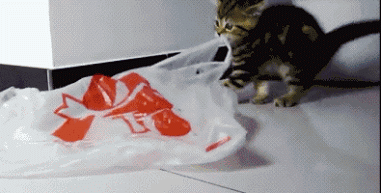

Keep favorites out of her reach, only to be used when playing with you. Rotate them, only having two or three, at most, available at a time. What about all those wonderful toys that your dog has? If they are lying around all the time, they aren’t special. Stuff hollow rubber toys with treats or moistened kibble and give them to your dog when you are away, so he will have something acceptable to do in your absence. If eviscerating upholstered furniture is a hobby, your dog must be kept in a crate or a gated dog-proof room when unsupervised. The only 100% effective way to save your possessions from destruction is to keep them out of your dog’s reach. Just remember that many of these are meant to be enjoyed with you and not left alone with your dog. There are many entertaining dog puzzles on the market, too, and you can even make your own. Fetch, hide and seek, and tug-of-war (played correctly) are great fun and exercise for both of you. Why does my cat chew on metal Is your cat chewing your jewelry, zippers, electric cords, or other shiny or metallic items within your house There are several reasons why your cat exhibits this strange behavior. If ugly winter weather keeps you inside, play indoor dog games with him. Here’s what could be causing your cat’s odd plastic habit. If your cat is nibbling on grocery bags, packing pillows, and shrink wrap, there may be an underlying reason - other than that your cat is just weird. Insufficient exercise and mental stimulation can drive your adult dog to find destructive forms of entertainment, so it’s up to you to meet his needs. Actually, plastic pica - a recurring behavior of eating or chewing on plastic - is quite common in cats. Teaching tricks is a good way to give your pup appropriate outlets.

If your puppy grabs a forbidden item while you are watching him, quickly distract him with a sharp “Eh eh!” and when he drops it, redirect cheerfully with a toy that he is allowed to have. Actually, plastic pica - a recurring behavior of eating or chewing on plastic - is quite common in cats. Puppies, just like human toddlers, need a completely puppy-proof area, either a dog crate or pet gated room. By around 6 months of age, they have their adult teeth and the need to chew abates, but boredom can give them a reason to take up the habit again. They have a mouthful of shiny new teeth, and they need appropriate puppy toys to use them on. Plastic is wonderfully chewy and when it is imbibed with our smell because we hold onto these things constantly, it can be irresistible. Certain items are especially appealing: eyeglasses, books, cell phones, television remotes, pillows and upholstery. In a dog’s mind, if something is within reach then it’s on offer. The question is usually about a young puppy, but it could be regarding an older dog who inexplicably got it into her head to be naughty after months of perfect behavior.

Here is a question AKC GoodDog! Helpline trainers hear often: Why does my dog chew up our things when he has dozens of his very own wonderful toys all over the place?


 0 kommentar(er)
0 kommentar(er)
